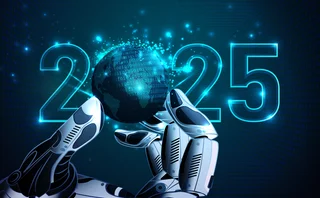Gen X Is No Different from the Baby Boomers

It’s almost impossible to get into a discussion about talent acquisition without the dreaded “M” word coming up—millennials. But the question of a rapidly changing workforce—and the problems it presents—is starting to appear in a range of areas.
For example, this month on WatersTechnology.com, my colleague Anthony Malakian spoke to several senior buy-side technologists who bemoaned that they are stuck in a permanent balancing act. They have technologically brilliant people entering the workplace, who are fluent in the new languages of the modern world, be that Python, Julia, R or even the proliferation of JavaScript libraries and frameworks. But that’s also a problem. One head of technology at a large asset manager, in Anthony’s piece, said his developers always want to use the latest toys with little regard for the consequences. “Unfortunately, they don’t always consider the longer-run, is-this-maintainable aspects of their decisions. So, you get each firm using a ton of different stuff for really no reason,” he said.
Senior technologists are stuck between keeping control of technology practices and giving their young minds the creative freedom they crave. Others are less critical about the influence of younger, digital-native professionals, but are clear that their entry into the workforce has had a profound impact on how they approach their products.
Robert Roley, general manager of SS&C Advent, pointed to this as a driver behind SS&C’s recent focus on user experience. That has involved a revamp in terms of how it develops its software—in part to mirror the usability and convenience of consumer applications. “That investor experience is best-in-class, and as Gen X or millennials are becoming the core clients of wealth managers as opposed to baby boomers, that digital presence is becoming even more critical,” he says.
Older generations complain about the younger ones—reinforced in modern times by a short walk through the neighborhoods of Williamsburg in Brooklyn, or Shoreditch in London, which serve as monuments to the excesses of this generation.
However, this has a tendency to blind people to their own history. Indeed, previous generations have been just as disruptive to the workforce as Gen X, or millennials, or whatever the appropriate label is. “I remember when my generation was really pushing electronic trading, during the Big Bang and after,” says one baby boomer at a Long Island-based fund, who worked in the City of London during the 1980s. “Back then we were also told we were a pain in the ass, that we were reckless, and you see the same things being said to millennials today. The real difference between then and now, I think, is that technology has emphasized the generational gap to a larger extent than it might have done in the past.”
Key Observation
This is the key observation when it comes to analyzing the impact of millennials in the workplace, and how they are changing industries. Arguments about critically low work ethic have the faint odor of similar stories about walking 15 miles in the snow to get milk—the impact that can often be seen in financial services firms is one that is driven by the adoption of technology at the behest of Gen X staff, or in order to attract them in the first place.
For other examples of generational similarities, look at the Cobol programming language. Created by a group of programmers in the 1970s, many have had to come out of retirement to fix banking systems that were built on the language, according to a recent Reuters article. These “Cobol Cowboys,” as the article calls them, are not dissimilar from the young minds creating platforms, investment book of record systems and trading engines today.
Perhaps, 40 years from now, we’ll see a similar group of graying, open-source enthusiasts unpicking the dying art of R from matching engines. All while navigating the perceived shortcomings of Generation Z.
Only users who have a paid subscription or are part of a corporate subscription are able to print or copy content.
To access these options, along with all other subscription benefits, please contact info@waterstechnology.com or view our subscription options here: https://subscriptions.waterstechnology.com/subscribe
You are currently unable to print this content. Please contact info@waterstechnology.com to find out more.
You are currently unable to copy this content. Please contact info@waterstechnology.com to find out more.
Copyright Infopro Digital Limited. All rights reserved.
As outlined in our terms and conditions, https://www.infopro-digital.com/terms-and-conditions/subscriptions/ (point 2.4), printing is limited to a single copy.
If you would like to purchase additional rights please email info@waterstechnology.com
Copyright Infopro Digital Limited. All rights reserved.
You may share this content using our article tools. As outlined in our terms and conditions, https://www.infopro-digital.com/terms-and-conditions/subscriptions/ (clause 2.4), an Authorised User may only make one copy of the materials for their own personal use. You must also comply with the restrictions in clause 2.5.
If you would like to purchase additional rights please email info@waterstechnology.com
More on Emerging Technologies
The next phase of AI in capital markets: from generative to agentic
A look at some of the more interesting projects involving advanced forms of AI from the past year.
Market data costs defy cyclicality
Trading firms continue to grapple with escalating market data costs. Can innovative solutions and strategic approaches bring relief?
As trading firms embrace AI, so do hackers
According to a Google cybersecurity report, cybercriminals are turning to AI to sharpen their attacks.
AI & data enablement: A looming reality or pipe dream?
Waters Wrap: The promise of AI and agents is massive, and real-world success stories are trickling out. But Anthony notes that firms still need to be hyper-focused on getting the data foundation correct before adding layers.
Waters Wavelength Ep. 343: Broadridge’s Jason Birmingham
This week, Jason Birmingham of Broadridge talks with Tony about the importance of fundamentals as technology rapidly evolves.
Data standardization is the ‘trust accelerator’ for broader AI adoption
In this guest column, data product managers at Fitch Solutions explain AI’s impact on credit and investment risk management.
BNY inks AI deal with Google, Broadridge moves proxy voting to AWS, Expero delivers ICE market data, and more
The Waters Cooler: TSX Venture Exchange data hits the blockchain, SmartTrade acquires Kace, and garage doors link to cloud costs in this week’s news roundup.
Everyone wants to tokenize the assets. What about the data?
The IMD Wrap: With exchanges moving market data on-chain, Wei-Shen believes there’s a need to standardize licensing agreements.







